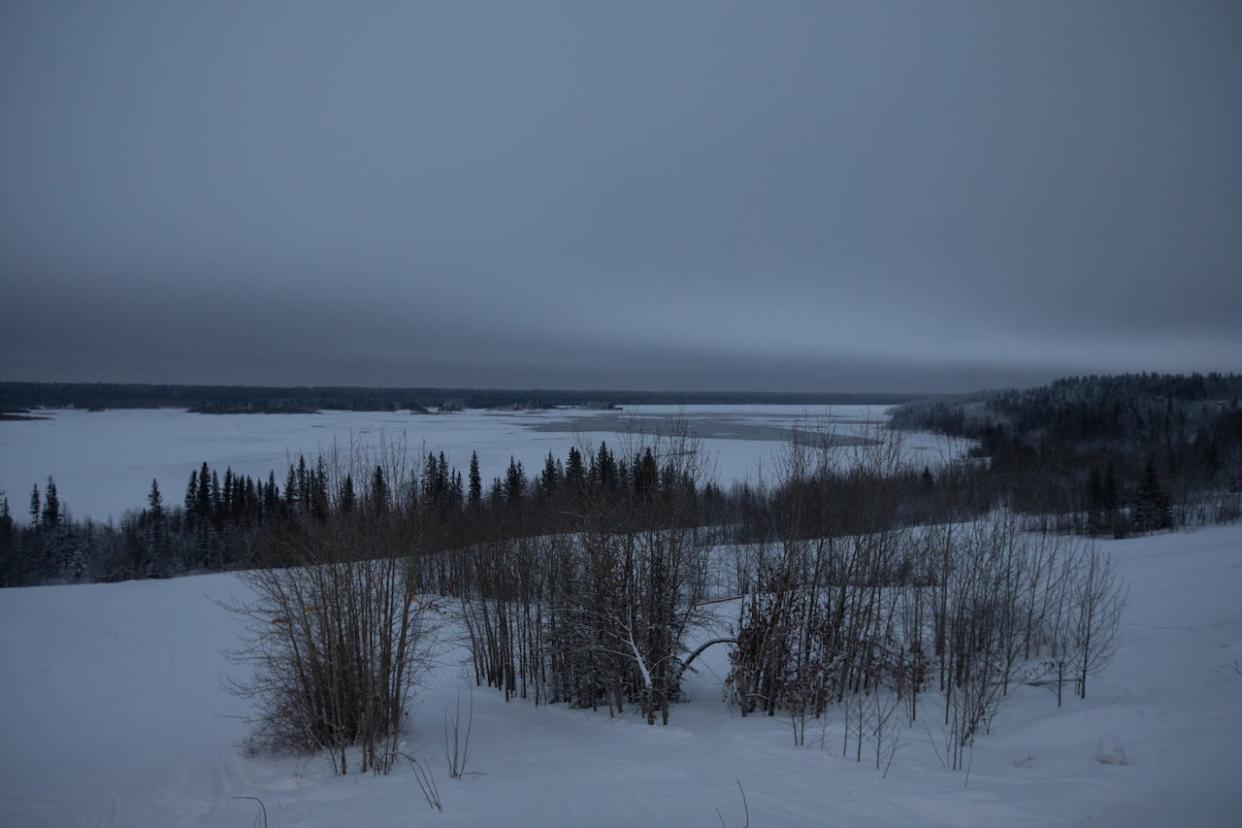Be wary of thin ice amid mild weather conditions, says hunter in Fort Smith, N.W.T.

Unusually mild weather has created dangerous travel conditions in the Northwest Territories.
The conditions, which scientists say are likely caused by the El Niño weather pattern, have led to freezing rain and thin ice.
Earl Evans, a long-time hunter from Fort Smith, N.W.T., says that means people should think twice about where they travel by snowmobile. The temperature in that community was just above zero on Wednesday afternoon.
"The Slave River is not a place to play around," he said.
"If you want to play around … the best place to do that is on dry land …with your scooters. Don't do it on the river right now, it's nice and warm out."

Earl Evans of Fort Smith said that due to the unpredictability of the Slave River, it's 'not a place to play around' on snowmobiles. (Carla Ulrich/CBC)
Evans says he'd like to see warning signs about thin ice posted around his community. He says people should use the main crossing points on the river when snowmobiling.
"Stay on the trails, don't go ripping around all over and making trails all over."
He advises against that because even if one person makes it across, the ice could still be breaking behind them. This creates danger for others who might see the tracks and follow them thinking it's safe — only to fall in.
Just last weekend, Evans said there were three or four snowmobiles stuck in the water up to their handlebars.
El Niño brings warmth
Michelle McCrystall, a climate scientist who studied Arctic climate change in her work as a postdoctoral fellow at the University of Manitoba, says the unseasonably warm temperatures are likely being caused by an El Niño weather pattern that's also affecting other parts of the globe.
El Niño is a tropical weather pattern that happens every two to seven years and typically brings warmer and drier conditions to the North.
"It could be that this year is just an anomaly because of the El Niño," she said.
"[With climate change] the likelihood of getting warmer events is likely to increase, but an event of this magnitude of what you're seeing this year … is likely down to natural variability."
Researchers are currently studying how El Niño weather patterns will change due to climate change, she said.
McCrystall's research, which used weather model data, looked at what will happen to Arctic weather patterns as the planet warms. She identified major changes to the weather, but said it's impossible to predict when they will begin, estimating that it could be as late as 2070 or 2090.
"We see there's going to be an even greater increase of precipitation in the Arctic, but more of this precipitation will be falling as rain than falling as snow," she said.
That's because less sea ice means there's more exposed ocean water which can then evaporate and become precipitation.
She also found that there's likely to be more precipitation coming into the Arctic from elsewhere on the planet.
"But we're also getting this flux coming in from outside of the Arctic, so boosting the amount of water that's available for precipitation," she said.
McCrystall looked at how these changes will be affected using a few different climate trajectories. The current trajectory is that the planet will warm by 2.7 C. However, she said that if we can restrict global temperature warming to 1.5 C, the weather pattern changes in the Arctic won't be as extreme.
"We actually can see a lesser of a transition, so some regions will still transition to more rainfall — but on the whole, most of the Arctic will stay snowfall-dominated," she said.
This, McCrystall said, is a call to action, and further evidence that the planet needs to stay within the 1.5 C temperature-increase range.


